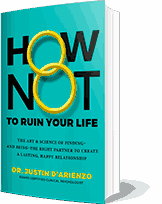- HOME
- PSYCHOLOGICAL SERVICES
- ONLINE COURSES
- Our Partnership Begins When You Purchase an Online Course
- Get to Know Dr. D’Arienzo, Relationship Expert
- Florida Premarital Preparation Online Course
- Georgia Premarital Education Online Course
- TwogetherinTexas Premarital Online Course
- Tennessee Premarital Preparation Online Course
- Minnesota Premarital Education Course Online
- Oklahoma Premarital Counseling Online Course
- South Carolina Premarital Preparation Course
- West Virginia Premarital Education Course
- Online Marriage and Relationship Tune Up Course
- Florida DCF Certified Parent Education and Family Stabilization Online Course
- Georgia Qualified Parent Education and Family Stabilization Online Course
- Texas Qualified Parent Education and Family Stabilization Online Course
- High Conflict Co-Parenting Online Certificate Course (8 Hours)
- Online Anger Management Four Hour Course (Level 1)
- Online Anger Management Eight Hour Course (Level 2)
- Sexual Harassment Online Training
- BUSINESS & PERFORMANCE PSYCHOLOGY
- CLINICAL, COUPLES, & FAMILIES
- ADHD Treatment & Evaluation Services
- Anger Management
- Anxiety Treatment & Evaluation Services
- Borderline Personality Treatment Services
- Cognitive Behavioral Therapy (CBT) Self-Help
- Couples Counseling and Marital Therapy
- Consent for Psychological Services for Minors Post-Divorce
- Depression Treatment Services
- Infidelity Recovery
- Jacksonville Counseling and Psychology
- Military Psychology & Tricare
- Narcissistic Personality Treatment Services
- Online Counseling
- Psychoeducational Testing
- Psychological Testing and Assessment
- Psychotherapy & Counseling
- FORENSIC PSYCHOLOGY & EXPERT TESTIMONY
- LIFE COACHING & EXECUTIVE COACHING
- MMPI TESTING & ASSESSMENT FOR SECURITY AND LEO
- CPI Police and Public Safety Assessment
- G License Psychological Testing
- Online Psychological Testing for Armed Security Guards and Personal Protection Officers
- MMPI Texas Level III CSO and IV PPO Psychological (ONLINE)
- Requirement for Texas Security License Applicants: MMPI Evaluation
- Level 3 Security Guard New Mexico Online MMPI Psychological Evaluation
- PSYCHOLOGICAL PUBLIC DISABILITY QUESTIONNAIRES (DBQ)
- ONLINE COURSES
- TEAM
- D’Arienzo Psychological Group Overview
- Dr. Justin D’Arienzo, Psy.D., ABPP
- Mario Decunto, LMHC
- Dr. Amy Hartley, Ph.D.
- Dr. Erica Janson, Psy.D.
- Alan Lipzin, LMHC
- Cynthia Salameh, Esquire
- Wendy Monger, Tutoring Specialist and Academic Coach
- Dr. Michael Nackashi, Psy.D., Clinical Psychologist
- Joseph Zichi, LCSW
- Mack, Roman and Roxy D’Arienzo
- MERCH & SOCIAL MEDIA
- BOOKS
- APPT REQUEST
PTSD Help and Information
Posted by: Dr. Justin D'Arienzo, Psy.D., ABPP
PTSD Help and Information
I have attached PTSD Help and Information articles, written for our practice, D’Arienzo Psychological Group, by two future clinical psychologists. Thank you both for your hard work and dedication! The public will find these articles helpful whether they are interested in learning more information about PTSD for educational purposes of if they want to better understand how to help themselves or a loved one suffering from PTSD.
Article Written by Brett Wallace, UNF Psychology Student and Future Psychologist, for D’Arienzo Psychological Group in Jacksonville, Florida
The symptoms of posttraumatic stress disorder (PTSD) have multiple triggers. Hinton, Nickerson, and Bryant (2011) give a nice list of these triggers. One of these is the arousability hypothesis. This states that simple triggers such as environmental events or a change in emotion for the person suffering from PTSD can cause the symptoms to appear. If the person suffering from PTSD goes into the mood state they were in during the traumatic event, they can start to re-experience the trauma. One thing that aids in the activation of triggers as mentioned in the study is the looping effect. This states that the more often PTSD symptoms are triggered the easier it will be to for those symptoms to be triggered in the future. In short, PTSD can easily cause a downward spiral. In Hinton et al’s (2011) study they sought to see the effect worry had on PTSD severity. To do this they used surveys to collect data about the participants. They found most participants worried and had panic attacks caused by worry within the last month. In short they found that worry can easily cause PTSD symptoms to appear, though, it appears to be indirect.
This leads to a study about rumination (Birrer, Michael, & Munsch, 2007). Rumination is the dwelling of a thought repeatedly. This may happen after something reminds them of the traumatic experience or if the individual is unsure of the future and constantly dwells on the future. It is possible that a random intrusive thought may appear while the individual is in deep thought. This will eventually lead to them to suffer from a traumatic symptom. In the study by Birrer et al (2007), they sought to study the effect of intrusive images and conscious triggers. In the study, they found that the most common conscious trigger was rumination about either the past or the future.
References
Birrer, E., Michael, T., & Munsch (2007). Intrusive images in PTSD and in traumatised and non -traumatised depressed patients: A cross-sectional clinical study. Behaviour Research and Therapy, 45, 2053-2065.
Hinton, D. E., Nickerson A., & Bryant, R. A. (2011). Worry, worry attacks, and PTSD among Cambodian refugees: A path analysis investigation. Social Sciences & Medicine, 72, 1817-1825.
PTSD HELP AND TRIGGERS, provided by UNF Psychology Student, Brandon Araujo, Future Psychologist, for D’Arienzo Psychological Group
Triggers are part of the re-experiencing phenomena displayed by those who suffer from PTSD. They are often unbidden, occurring without warning. Triggers are not just physical prompts, but can also be emotional, occurring when the individual is placed in a situation where the same emotion is experienced. These emotional triggers include guilt, fear, or lack of control, and they are just as strong as physical triggers, if these emotions were to arise in the courtroom in could be very possible he may experience a flashback.
Triggers occur unpredictably, and as a result the veteran and his or her family can be greatly concerned and confused. Sleep disturbance often results and there are very strong ‘fight or flight’ reactions.
Common triggers include:
- Specific scenes – crowded streets, sunsets, sunrises, familiar clothing
- Movement – someone rushing towards the individual
- TV – even if the story is unreal, the subject or the environment may cause thoughts which act as a trigger
- Sound – helicopters, songs, unexpected loud noises
- Smell – jungle or bush, rain, smoke, blood, cordite or explosives
- Reading – or discussion about subjects of trauma
- Touch – gun metal, webbing, blood
- Situational – being crowded, walking across open spaces, feeling vulnerable or not in control
- When Veterans followed news closely they reported that media coverage of war brought back thoughts and feelings of their own military experiences.
- Recent research found that individuals who repeatedly exposed themselves to disturbing images from television reports were at greater risk of developing PTSD over the next two to three years.
- When PTSD symptoms got worse for some Veterans, it may have been related to how closely what they were seeing on the news reflected what they had gone through while serving.
- Veteran gatherings or American symbols with high emotional value also could cause PTSD symptoms to recur or worsen.
LINKS: http://www.ptsd.va.gov/public/types/war/terrorism-war-affect-vets.asp
http://www.vvaa.org.au/ptsd.htm#Triggers




